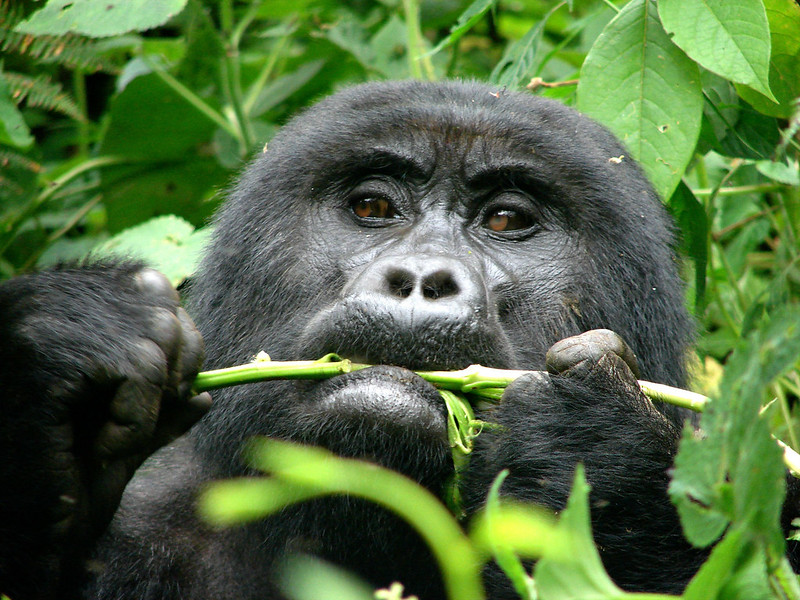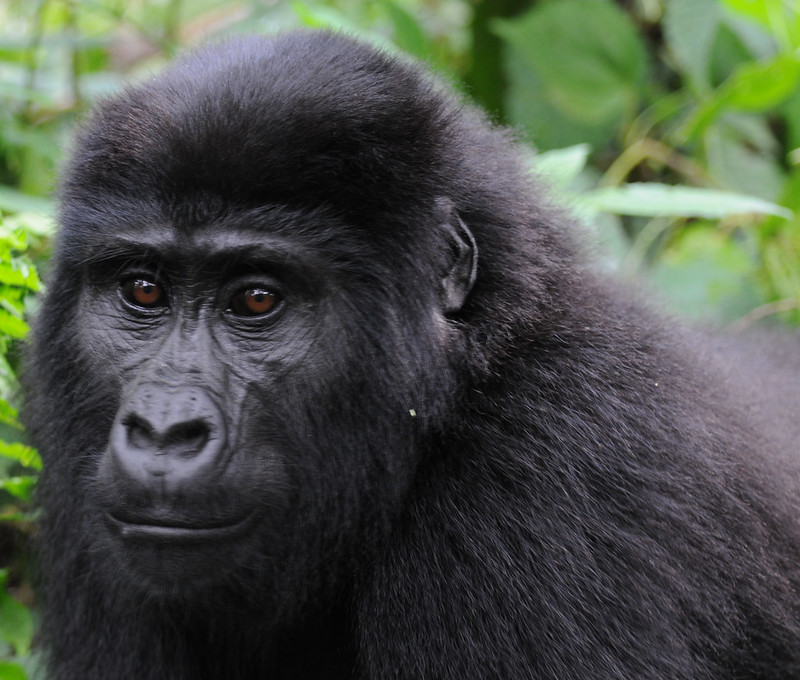Gorilla Lifespan (How Long does Gorilla Live?)
Gorilla Lifespan, If you have consistently contemplated the lifespan of gorillas, this article is ideal for you. The longevity of gorillas varies; among mountain gorillas, it is estimated to average between 30 and 35 years.
Gorillas are categorized into two types: lowland and mountain gorillas. Lowland gorillas are accessible in zoos, however mountain gorillas can only be observed in their natural habitat through trekking. These remarkable beings possess approximately 98 percent of their DNA in common with humans, rendering them our nearest cousins on Earth, subsequent to chimpanzees. Mountain gorillas are large, clever, and formidable wild animals, offering a remarkable experience for anyone fortunate enough to observe them during gorilla safaris in Uganda, Rwanda, or the Democratic Republic of Congo.

Gorilla Lifespan: Conversely, lowland gorillas predominantly inhabit the jungles of Nigeria, Angola, Equatorial Guinea, Gabon, Cameroon, and Congo. For those interested in observing mountain gorillas, the optimal choice is to visit Bwindi and Mgahinga National Parks in Uganda, Volcanoes National Park in Rwanda, and Virunga National Park in the eastern Democratic Republic of Congo.
Bwindi Gorilla Nest in Uganda comprises approximately 20 habituated families, with just one designated for tourist experiences in Mgahinga Gorilla National Park. The primary distinctions between the two primates are their habitat, coloration, and hair length. Nevertheless, they can flourish for a duration of 35 to 40 years. Regrettably, mountain gorillas are typically afflicted by arthritis, which inflicts harm on their bones, feet, and hands. Gorillas can thrive for up to 50 years in captivity, unlike mountain gorillas. In advanced age, individuals may experience tooth loss, which can lead to difficulties in feeding. Moreover, they allocate more time to feeding than other group members, resulting in a diminished lifespan and often leading to premature death.
Examining their life cycle, we take into account factors like birth, reproduction, growth, and other notable characteristics. Mountain gorillas, scientifically designated as Gorilla beringei beringei, undergo a life cycle; however, their physical form does not undergo significant transformation.
Female mountain gorillas give birth to one infant gorilla following a gestation period of approximately nine months, similar to humans. Despite their considerable size, a newborn gorilla weighs approximately 4 pounds. The neonate relies on the mother, who gestates her offspring for around four months. They begin to cling to their mothers’ backs until they cease feeding at 2 to 3 years of age.
Upon reaching three years of age, they can exist alone; yet, they remain immature at this level. Their juvenile phase persists until they attain the age of 6 years or older. Female gorillas attain sexual maturity at 10 years, and males reach it between 15 and 20 years, a phase commonly referred to as the mature adult stage. They are characterized as adults between the juvenile and mature adult stages.

Conversely, after a male mountain gorilla reaches sexual maturity, he can seek a spouse to procreate. They reside in groups of 30 individuals, led by a dominating silverback gorilla. An adult male gorilla is referred to as a silverback because of the gray hair that develops on its back. A gorilla group consists of females, newborns, juveniles, and adult males, among others. A silverback gorilla is responsible for the protection of other group members, mating, and determining their feeding locations.
In conclusion, the longevity of mountain gorillas is influenced by various factors, including poaching, human infectious diseases, and habitat loss, among others.
